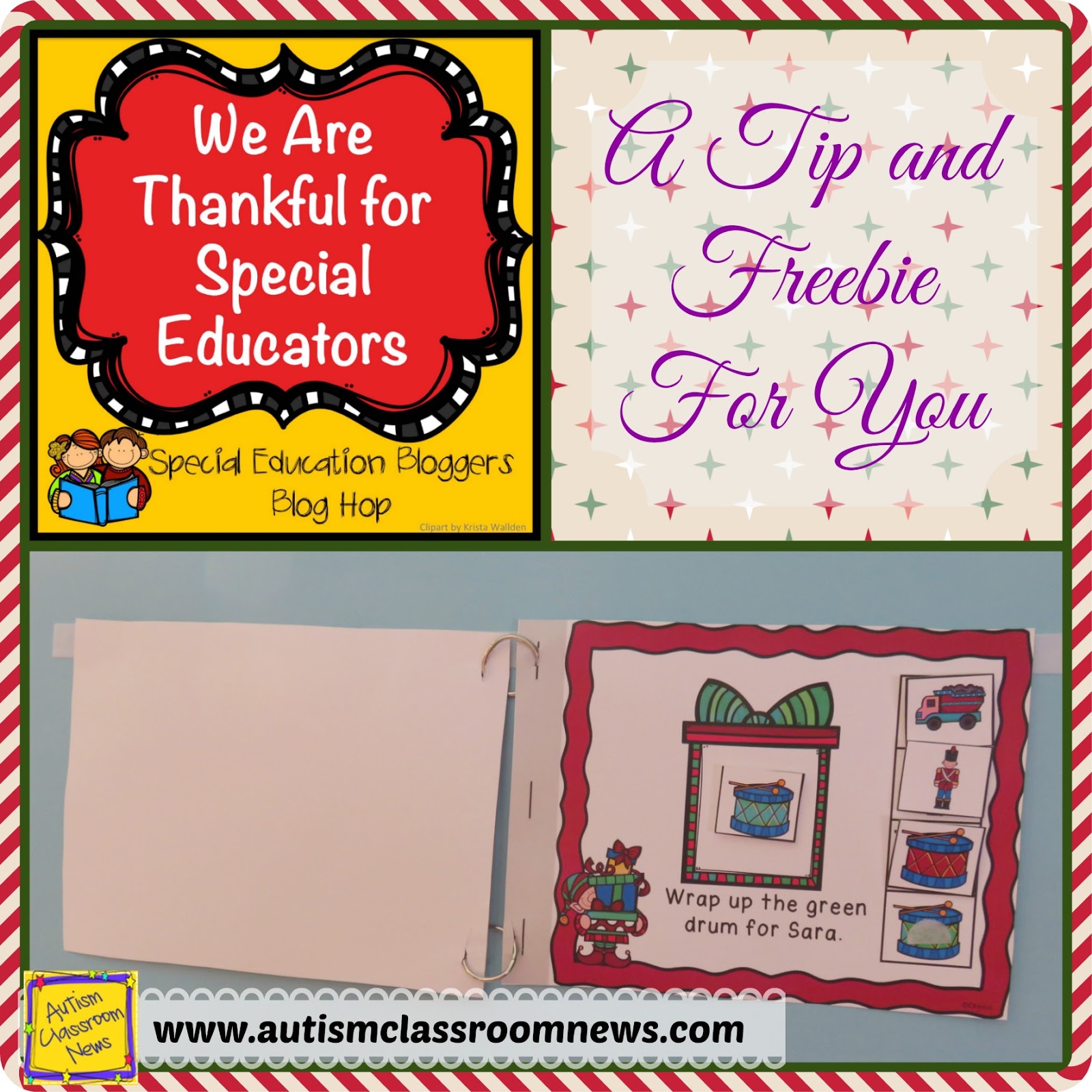Today's freebie is designed to help your kids while saving you time--and as a bonus, send a tool home that their parents can use with the students over break. We all know that many students with autism and similar special needs have difficulty with changes in routine. As such, they often become upset during long breaks.
This is a black-and-white mini-book that the students cut out, assemble, and color the pictures. It comes with a December 2014 and January 2015 calendar. One of the strategies in the book is for students to check their calendar and the books can be sent home so that the families can use it as well.
You can use the book to talk about the upcoming winter break. Have the students find the date that break starts and mark it on the calendars in the book and at the end. Have them find the date that they come back to school and mark that on the calendar in the book and at the end. Then you can send the whole book home for the family to use to review and to show their child the calendar as a reminder of when school starts again. You can even decide not to include specific pages that are not relevant for a student to customize the book.
Click the picture above or
HERE to download the free social narrative book from my TPT store. I would love for you to leave feedback about it as well!
And don't forget the
GIVEAWAY that is running through Friday. Make sure to enter and you can add extra entries each day until it closes.
Giveaway
Instagram Share--$20 Starbucks Gift Card
Need an extra boost to get back to the classroom next week....or just an extra boost to recover from the week? How about a
$20 Starbucks Gift Card emailed to you? Would that help?
If so, enter the Instagram giveaway below. I love Instagram and love it when folks share pictures of my products created and in use and tag me. So, for this contest you can gain entries by following me on Instagram at @autismclassroomnews and more entries by sharing a picture of one of my products (it can be a freebie from the blog or a purchased product from
my store). It can be in use or it can just be sitting in your classroom. You can enter this once daily to the end of the contest.
A couple of caveats / fine print.
First, no pictures of children other than hands--nothing identifiable (i.e., no faces) unless you have permission. Second, your sharing of the picture on Instagram provides me with permission to repost it using a repost app and tagging you (so you'll know it's been shared). Finally, Instagram is not responsible for or associated with this giveaway in any way and entry into the contest indicates you release them from any responsibility. Make sure to tag your image with #ACNWinterGiveaway so I'll be able to see it and put your Instagram name in the Rafflecopter so I'll know it's you if you win.
Enter in the Rafflecopter below.
a Rafflecopter giveawayTwitter Share--$20 Amazon Gift Card
And, do you need a little help buying gifts? Or maybe just a little something for yourself...or {gasp} your classroom? How about a
$20 Amazon gift card? Follow me on Twitter and tweet a message to enter...you can do this everyday. Enter with the Rafflecopter for that card below.
a Rafflecopter giveawayPinterest Share--$20 TeachersPayTeachers Gift Card
And finally maybe you want to stock up on materials to start off the new year right. Enter to win a TPT $20 gift card that can be used in ANY store on the site--even mine. :) Just follow me on Pinterest and then each day you can earn entries by pinning an image from my store. Enter in the Rafflecopter below.
a Rafflecopter giveawayUntil next time,





















.png)








.png)

















